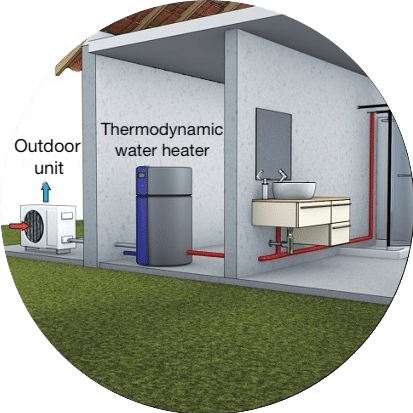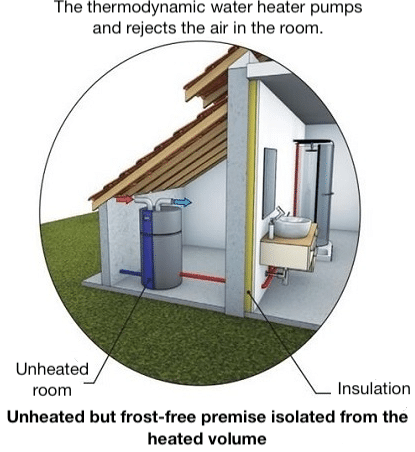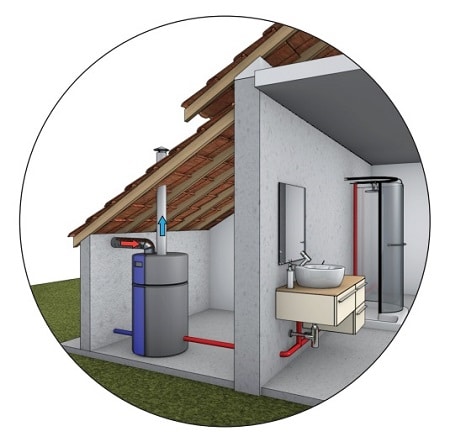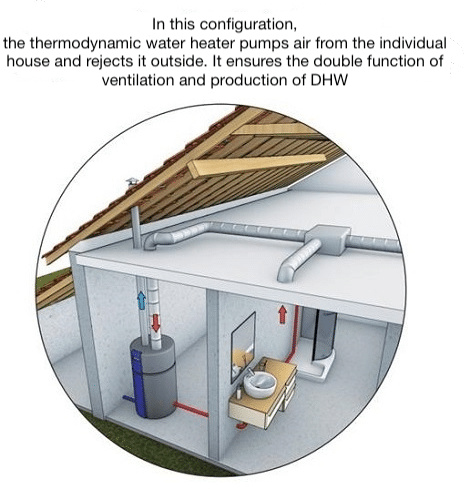
Thermodynamic water heaters are “heat pump” type hot water production systems. They work according to the principle of reversible air conditioners when used in heating mode.
The thermodynamic water heater recovers heat from the outside or from an unheated room and restores it to the domestic water to be heated.

The electricity consumption of thermodynamic systems is not, as in the case of electric radiators, equal to the quantity of heat supplied. It corresponds to that which was necessary to carry out the “transport” of the heat taken from the outside and transferred towards the inside. Compared to a purely electric heating, the consumption is divided by 2, even by 3 or 4.


Most often thermodynamic water heaters are installed in an unheated room where they recover “free” heat
The free heat recovered in the unheated room by the thermodynamic water heater can come from :
– the outside if the unheated room benefits from sunshine
– the inside if there are appliances that give off heat or humidity such as a clothes dryer or refrigerating machines (freezer, wine cellar, etc.)
– the floor, ground level, cellar or crawl space whose temperature is more stable and higher than that outside.
In order to present a “sufficient heat reserve” the room must have a volume greater than 20 [m3]. The operation of the thermodynamic water heater will lower the temperature of this room. To avoid any risk of freezing, the minimum temperature of the room where the water heater will be installed must be at least +5 [°C]. Finally, the wall(s) separating the installation room from the heated rooms must be insulated as much as possible.

When the unheated room is not suitable for heat recovery, the thermodynamic water heater can be connected to the outside air by a set of suction/rejection ducts. The heat will be recovered directly from the outside air. This solution avoids cooling the unheated room and the installation of the outdoor unit presented above.

Finally, thermodynamic water heaters can be used to recover heat from the extraction of hot air from kitchen and toilet rooms.
This configuration will be more interesting on single flow ventilation systems than on double flow systems which already allow the installation of a heat recovery unit on the extracted air to preheat the ventilation air.
